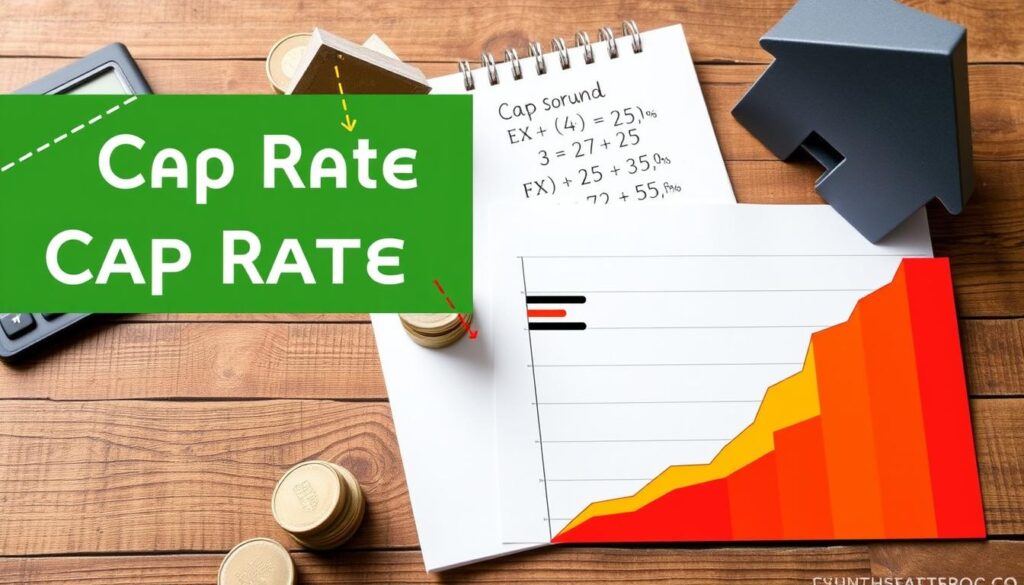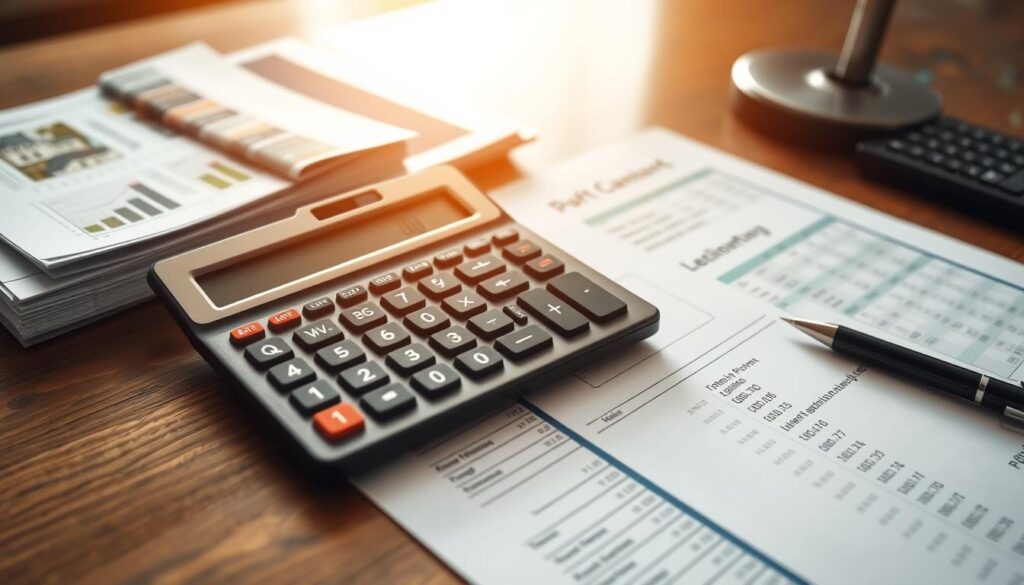When it comes to rental property investment, understanding the cap rate calculation is crucial for making informed decisions. The cap rate, or capitalization rate, is a metric used to measure the performance of a rental real estate property, providing an estimate of the potential return on investment. In simple terms, the cap rate is calculated by dividing the net operating income by the current market value of the asset. This metric allows investors to compare different properties and assess their potential returns, making it a vital tool for rental property investment.
For instance, a capitalization rate of around 10% is considered ideal by most investors for rental property investments. However, factors such as real estate market conditions, investor type, and property potential play a significant role in determining what constitutes a good or bad capitalization rate. By using the cap rate calculation in conjunction with other financial metrics, investors can gain a more comprehensive understanding of their rental property investment and make more informed decisions.
Table of Contents
Key Takeaways
- The cap rate calculation is a crucial metric for rental property investment, providing an estimate of potential return on investment.
- A capitalization rate of around 10% is considered ideal by most investors for rental property investments.
- Cap rates between 4% and 12% are generally considered good for rental real estate properties.
- Real estate cap rate calculators can provide accurate and efficient calculations, helping investors save time and reduce errors.
- Cap rates may vary based on factors like property location, property type, market conditions, and historical costs.
- The cap rate formula is: Cap Rate = (Net Operating Income / Property Value) x 100.
Understanding Cap Rate Fundamentals
When it comes to real estate investing, understanding the cap rate is crucial for making informed decisions. The cap rate, or capitalization rate, is a metric used to evaluate the potential return on investment for a property. It’s calculated by dividing the property’s net operating income by its current market value, typically expressed as a percentage. In the context of property valuation, the cap rate plays a significant role in determining the value of a property.
In real estate investing, the cap rate is a key factor in assessing the potential return on investment. A good cap rate is generally considered to be around 5% to 10%. However, this can vary depending on factors such as location, competing properties in the market, and potential growth trends in the local market. For instance, high-traffic areas usually come with higher capitalization rates due to increased demand.
The cap rate is used to estimate the time it will take to recover the invested amount in a property. It’s essential to consider the cap rate when evaluating different properties, as it can help investors compare potential returns and make more informed decisions. In the current economic environment, the interest rate hikes by the Fed have led to an increase in financing costs, resulting in rising cap rates for multifamily, industrial, and office properties.
What is a Cap Rate?
A cap rate is a percentage that represents the ratio of a property’s net operating income to its current market value. It’s a crucial metric in real estate investing, as it helps investors evaluate the potential return on investment for a property.
Why Cap Rate Matters in Real Estate Investing
The cap rate matters in real estate investing because it provides a way to compare the potential returns of different properties. It’s a key factor in determining the value of a property and can help investors make more informed decisions.
The Role of Cap Rate in Investment Decisions
The cap rate plays a significant role in investment decisions, as it helps investors evaluate the potential return on investment for a property. It’s essential to consider the cap rate when evaluating different properties, as it can help investors compare potential returns and make more informed decisions.
The Basic Formula to Determine the Cap Rate of a Rental Property
To calculate the cap rate of a rental property, you need to understand the cap rate formula, which is Cap Rate = (Net Operating Income / Property Value) x 100. This formula is crucial in rental property analysis, as it helps investors assess a property’s profitability and compare it to similar properties in the area.
The ideal cap rate range in the commercial real estate (CRE) market is typically considered to be between 5% and 10%. Properties with higher cap rates tend to offer higher potential returns but also carry higher risks. The cap rate is a measure of both returns and risk in real estate investments, and it does not include mortgage payments or interest in its calculation, focusing on the property’s core operations.
Here are the key factors that impact cap rates:
- Location
- Market size
- Asset stability
- Growth potential
- Capital investment
A higher Cap Rate signifies a riskier investment but potentially a more profitable one. The target Cap Rate should consider factors like location, demand, and economic stability.
By using the cap rate formula and considering the factors that impact cap rates, investors can make informed decisions when it comes to rental property analysis and investment. The cap rate formula is a valuable tool in real estate investing, and understanding how to calculate and interpret it is essential for success in the industry.
| Cap Rate Range | Description |
|---|---|
| 4% – 6% | Considered a good cap rate range, depending on risk tolerance and investment goals |
| 5% – 10% | Ideal cap rate range in the commercial real estate (CRE) market |
Essential Components of Net Operating Income
To determine the cap rate of a rental property, it’s crucial to understand the essential components of Net Operating Income (NOI). NOI is the total annual income generated by the property minus all operating expenses. In rental income calculation, NOI plays a vital role in assessing the profitability of an investment property. Property expenses, such as maintenance, insurance, and property taxes, are subtracted from the gross rental income to arrive at the NOI.
The calculation of NOI involves several key factors, including:
- Gross Rental Income: The total annual income generated by the property, including rent and other sources of income.
- Operating Expenses: These include property expenses such as maintenance, insurance, property taxes, and management fees.
- Vacancy Rates: The percentage of time a property remains unoccupied, which affects the overall rental income.
By understanding these components, investors can accurately calculate the NOI and make informed decisions about their investment properties. A higher NOI indicates a more profitable property, while a lower NOI may indicate a need to adjust rental income calculation or property expenses.
In the context of rental income calculation, it’s essential to consider all property expenses to ensure an accurate NOI. By doing so, investors can optimize their investment strategies and maximize their returns.
| Gross Rental Income | Operating Expenses | NOI |
|---|---|---|
| $26,000 | $10,000 | $16,000 |
Common Mistakes When Calculating Cap Rates
When it comes to investment property analysis, calculating the cap rate is a crucial step. However, cap rate errors can occur due to various reasons, such as overlooking certain expenses or using unrealistic rental income projections. To avoid these mistakes, it’s essential to understand the common pitfalls investors face when calculating cap rates.
Some common mistakes include failing to account for market-specific factors, not considering the impact of leverage, and neglecting to factor in potential changes in cash flow due to improvements or renovations. These cap rate errors can lead to inaccurate calculations, which can ultimately affect investment decisions.
To ensure accurate investment property analysis, it’s vital to be aware of these common mistakes and take steps to avoid them. This can be achieved by conducting thorough research, using realistic assumptions, and considering all relevant factors that may impact the cap rate.
By being mindful of these potential pitfalls and taking a careful approach to calculating cap rates, investors can make more informed decisions and avoid costly mistakes. Whether you’re a seasoned investor or just starting out, understanding how to accurately calculate cap rates is essential for successful investment property analysis.
| Property Type | Typical Cap Rate Range |
|---|---|
| Single-family homes | 3% to 5% |
| Multi-family properties | 4% to 6% |
| Office buildings | 5% to 10% |
Market Considerations in Cap Rate Analysis
When it comes to real estate market analysis, location factors play a significant role in determining the cap rate of a rental property. The cap rate can vary between urban and suburban areas, depending on factors such as property values, rent levels, and local economic conditions.
A good cap rate for a rental property is commonly between 5% and 10%, with some locations even considering 4% – 5% as good. To calculate the cap rate, you divide the net operating income (NOI) by the total property cost. For example, if a property generates $50,000 in annual profit with a valuation of $500,000, the cap rate would be 10%.
Factors influencing a rental property’s cap rate include location, property condition, property type, operating expenses, market conditions, and economic factors. Market conditions, such as supply and demand dynamics, vacancy rates, and rental trends, significantly impact a property’s cap rate. Economic factors like inflation and interest rates directly influence the cost of borrowing and investment returns, impacting the cap rate of rental properties.
Real estate investors can improve a property’s cap rate by renovating and upgrading the property, identifying optimal locations, evaluating renovations, implementing energy-efficient measures, offering additional amenities, and seeking assistance from property management companies. By considering these location factors and market conditions, investors can make informed decisions when it comes to real estate market analysis and cap rate calculations.
| Location | Cap Rate | Property Type |
|---|---|---|
| Urban | 8-10% | Single-family homes |
| Suburban | 6-8% | Multi-family units |
| Rural | 4-6% | Commercial properties |
Tools and Resources for Cap Rate Calculations
When it comes to calculating cap rates, having the right tools and resources can make a significant difference. A cap rate calculator is a valuable tool that can help investors and real estate professionals determine the cap rate of a property. This calculator takes into account the property’s net operating income, market value, and other factors to provide an accurate calculation.
In addition to a cap rate calculator, investment analysis tools can also be useful in evaluating the potential of a real estate investment. These tools can provide insights into the property’s cash flow, return on investment, and other key metrics. By using these tools, investors can make more informed decisions and avoid potential pitfalls.
Some of the key features to look for in a cap rate calculator and investment analysis tools include:
- Easy-to-use interface
- Accurate calculations
- Comprehensive analysis
- Customizable reports
By leveraging these tools and resources, investors can streamline their investment analysis process and make more informed decisions. Whether you’re a seasoned real estate investor or just starting out, a cap rate calculator and investment analysis tools can be invaluable assets in your toolkit.
| Tool | Features | Benefits |
|---|---|---|
| Cap Rate Calculator | Easy-to-use interface, accurate calculations | Streamlines investment analysis process |
| Investment Analysis Tools | Comprehensive analysis, customizable reports | Provides insights into property’s cash flow and return on investment |
Interpreting Cap Rate Results
When evaluating a potential investment property, it’s essential to understand how to interpret cap rate results. A cap rate, or capitalization rate, is a metric used to assess the profitability of a real estate investment. It’s calculated by dividing the net operating income (NOI) by the current market value of the property. Generally, cap rates between 4% and 12% are considered good, but this can vary depending on factors like location, property type, and individual investment goals.
For investment property evaluation, a good cap rate is often considered to be between 4% and 5% for investors seeking a respectable return on investment without high risk. However, some investors prefer cap rates of at least 8%, while others aim for double-digit figures. It’s crucial to remember that cap rates are directly correlated with risk – the higher the cap rate, the riskier the investment. Real estate risk assessment is critical in this process, as it helps investors make informed decisions.
What Makes a Good Cap Rate
A good cap rate depends on various factors, including location, market size, asset stability, growth potential, and capital liquidity. Urban areas, highly educated populations, and diversified economic bases tend to have more robust and reliable cap rates. Lower-than-average cap rates may indicate an unwise investment unless backed by knowledge of upcoming developments or economic improvements.
Risk Assessment Through Cap Rates
Cap rates can be used for real estate risk assessment, as they provide insight into the potential risks associated with an investment. By analyzing cap rates, investors can compare the risk of different properties and make informed decisions. It’s essential to consider the cap rate in conjunction with other factors, such as potential improvements and market trends, to get a comprehensive understanding of the investment’s potential.
Market Comparison Strategies
To effectively compare cap rates across different markets and property types, investors should consider the following strategies:
- Research local market trends and conditions
- Analyze comparable properties and their cap rates
- Consider factors like location, property type, and growth potential
- Use automation and systems, like automated income and expense tracking tools, to generate accurate reports and calculate cap rates efficiently
By following these strategies and considering the cap rate in conjunction with other factors, investors can make informed decisions and achieve their investment goals. Remember, a good cap rate is just one aspect of a successful investment – it’s essential to consider the broader context of your investment strategy when interpreting cap rate results.
| Cap Rate | Risk Level | Investment Potential |
|---|---|---|
| 4-5% | Low | Stable, long-term investment |
| 6-8% | Moderate | Balanced investment with potential for growth |
| 9-12% | High | High-risk, high-reward investment |
Advanced Cap Rate Considerations
For experienced investors, sophisticated real estate analysis involves considering various factors that impact cap rates. These include location, property type, market conditions, and interest rates. By analyzing cap rates across different markets and segments, investors can reveal market trends, investor sentiment, and relative risk and return of properties.
A key aspect of investment strategy is understanding how cap rates can indicate market trends. For instance, higher cap rates may indicate a rising interest rate environment, while lower cap rates may suggest a low-interest-rate environment. Additionally, the efficiency of property management, tenant quality, amenities, and lease terms can significantly impact a property’s net operating income (NOI) and, subsequently, its cap rate.
Some factors to consider when evaluating cap rates include:
- Location and market conditions
- Property type and condition
- Rental income and expenses
- Financing terms and interest rates
By incorporating these factors into their sophisticated real estate analysis, investors can develop a comprehensive investment strategy that balances risk and return. This may involve targeting properties with higher cap rates for potentially higher returns or opting for lower cap rates for greater stability.
Ultimately, advanced cap rate considerations require a deep understanding of the complex interplay between market trends, property characteristics, and financing terms. By mastering these concepts, investors can refine their investment strategy and make more informed decisions in the pursuit of optimal returns.
| Property Type | Cap Rate Range |
|---|---|
| Residential Rental | 4% – 8% |
| Residential Multifamily | 4% – 6% |
| Airbnb | 8% or higher |
The Relationship Between Cap Rate and Property Value
Understanding the relationship between cap rate and property value is crucial for real estate investors. A property’s value can significantly impact its cap rate, and vice versa. For instance, when property values rise, cap rates tend to decrease, a phenomenon known as cap rate compression. This can affect financing options and make it more challenging for new investors to enter the market.
Several factors contribute to real estate appreciation and, subsequently, changes in property value. These include improvements to the property, increased market demand, and local development. As property values appreciate, the cap rate may decrease, making it essential for investors to consider property value assessment when evaluating potential investments.
Market timing considerations also play a critical role in understanding the relationship between cap rate and property value. By analyzing cap rates, investors can determine whether a market is overvalued or undervalued, making informed decisions about when to buy or sell. For example, a low cap rate may indicate a high property value, while a high cap rate may suggest a lower property value.
Value Appreciation Factors
- Improvements to the property
- Increased market demand
- Local development
Market Timing Considerations
By considering these factors and understanding the relationship between cap rate and property value, investors can make more informed decisions and maximize their returns. Whether you’re a seasoned investor or just starting out, it’s essential to stay up-to-date on the latest market trends and adjust your strategy accordingly to achieve real estate appreciation and long-term success.
Cap Rate Limitations and Alternative Metrics
When evaluating real estate investments, it’s essential to consider multiple real estate investment metrics beyond the cap rate. While the cap rate provides valuable insights into a property’s potential return on investment, it has limitations. For instance, it doesn’t account for financing costs or provide a dynamic view of the market. To get a more comprehensive picture, investors can use alternative metrics like cash-on-cash return, internal rate of return (IRR), and gross rent multiplier.
These alternative metrics can complement property analysis methods by offering different perspectives on an investment’s potential. For example, the cash-on-cash return considers the investor’s actual cash investment, providing a more accurate picture of the return on investment. By combining these metrics with the cap rate, investors can make more informed decisions.
Some key factors to consider when evaluating alternative metrics include:
- Location and market trends
- Property type and condition
- Risk assessment and potential for growth
By considering these factors and using a combination of real estate investment metrics and property analysis methods, investors can develop a more nuanced understanding of their investments and make better decisions. This approach allows for a more comprehensive evaluation of an investment’s potential, beyond the limitations of the cap rate.
Real-World Examples of Cap Rate Analysis
When evaluating rental property examples, it’s essential to consider the cap rate as a key metric. This financial ratio helps investors assess the potential rate of return on an investment property. In this section, we’ll explore investment case studies across different property types, including single-family rentals, multi-family properties, and commercial properties.
Single-Family Rental Example
A single-family rental property with a purchase price of $200,000, gross rental income of $20,000 per year, and operating expenses of $8,000 per year would have a cap rate of 6%. This example illustrates how to calculate the cap rate for a single-family rental property.
Multi-Family Property Case Study
A multi-family property with a purchase price of $1 million, gross rental income of $120,000 per year, and operating expenses of $30,000 per year would have a cap rate of 9%. This case study demonstrates how to apply the cap rate formula to a multi-family property.
Commercial Property Illustration
A commercial property with a purchase price of $5 million, gross rental income of $600,000 per year, and operating expenses of $150,000 per year would have a cap rate of 9%. This illustration shows how to calculate the cap rate for a commercial property.
The following table summarizes the cap rates for different property types:
| Property Type | Purchase Price | Gross Rental Income | Operating Expenses | Cap Rate |
|---|---|---|---|---|
| Single-Family Rental | $200,000 | $20,000 | $8,000 | 6% |
| Multi-Family Property | $1 million | $120,000 | $30,000 | 9% |
| Commercial Property | $5 million | $600,000 | $150,000 | 9% |
Future Projections and Cap Rate Trending
To stay ahead in the real estate market, it’s essential to use cap rates for future projections and trend analysis. By tracking cap rates over time, investors can gain insights into market trends and property performance. This information can be used to make informed decisions about investment trends and adjust strategies accordingly.
In the context of real estate market forecasting, cap rates play a crucial role. They help investors evaluate the potential return on investment and make comparisons between different properties. By analyzing cap rate trends, investors can identify areas with high growth potential and make informed decisions about their investments.
Some key factors to consider when using cap rates for future projections include:
- Market trends and fluctuations
- Property performance and potential for growth
- External factors such as interest rates and economic conditions
By taking these factors into account, investors can use cap rates to make informed decisions about their investments and stay ahead in the competitive real estate market.
Professional Insights on Cap Rate Application
Real estate expert advice suggests that cap rates are a crucial metric in evaluating the potential return on investment for rental properties. Investment best practices involve considering cap rates in conjunction with other factors, such as location, market trends, and property type. A good range for cap rate for investment properties generally falls between 4-10%, with investors often preferring the higher end of this spectrum.
According to real estate experts, a higher cap rate indicates potentially higher returns but also higher risk, while a lower cap rate points to lower risk investments found in more stable areas. For instance, a property with a cap rate of 8% may outperform one with a cap rate of 7.3%, showcasing that higher market value does not necessarily equate to higher profitability. Net Operating Income (NOI) is a key component in calculating cap rates, and it can be calculated by subtracting all operating expenses from gross rental income.
Some key factors that can impact cap rates and overall investment profitability include location, local market trends, competition, available capital for property upgrades, and growth potential. Real estate investors should consider these factors when evaluating investment opportunities and seek real estate expert advice to make informed decisions. By following investment best practices and considering cap rates in conjunction with other metrics, investors can make more informed decisions and achieve their investment goals.
- Consider multiple factors when evaluating investment opportunities, including cap rates, location, and market trends.
- Seek real estate expert advice to make informed decisions.
- Monitor changes in the real estate market and adjust investment strategies accordingly.
| Property Type | Average Cap Rate |
|---|---|
| Office Building | 5.5% |
| Residential Property | 7-8% |
| Commercial Property | 6-7% |
Risk Management Using Cap Rates
When it comes to real estate risk assessment, understanding cap rates is crucial. Cap rates can indicate the level of risk associated with a property, with higher cap rates generally indicating higher risk and potentially higher returns. On the other hand, lower cap rates typically indicate lower risk but also lower returns.
Investors can use cap rates as part of their investment risk management strategy to balance risk and return in their real estate portfolio. By analyzing cap rates, investors can compare the relative value of similar properties and make informed decisions about their investments.
Here are some key points to consider when using cap rates for risk management:
- Cap rates can vary depending on the location, property type, and market conditions.
- Higher cap rates may indicate higher risk, but also potentially higher returns.
- Lower cap rates typically indicate lower risk, but also lower returns.
By understanding cap rates and how they relate to risk, investors can make more informed decisions about their real estate investments and develop a effective investment risk management strategy.
| Cap Rate | Risk Level | Potential Return |
|---|---|---|
| 4% | Low | Lower |
| 8% | Moderate | Medium |
| 12% | High | Higher |
Conclusion
As we conclude this comprehensive guide, it’s clear that understanding and accurately calculating cap rates is essential for real estate investors seeking investment success. Cap rates provide a valuable metric to quickly assess a property’s potential value and profitability, making them a critical tool in the decision-making process.
While cap rates should not be the sole factor in your investment analysis, they offer important insights into a property’s cap rate importance. By carefully considering factors like location, property type, and market conditions, you can gain a deeper understanding of a rental property’s true earning potential.
Moving forward, we encourage you to continue honing your cap rate analysis skills, staying up-to-date on industry trends, and integrating this metric into your holistic investment strategy. With the right knowledge and approach, cap rates can be a powerful ally in your quest for real estate investing success.
FAQ
What is a cap rate?
A cap rate is a metric used in real estate investing to measure the potential return on investment of a property. It represents the ratio of the property’s net operating income to its market value.
Why is understanding cap rate important for real estate investors?
Cap rates are crucial for real estate investors as they help assess the potential profitability and risk of a property. Cap rates allow investors to compare different investment opportunities and make more informed decisions.
How is the cap rate formula calculated?
The basic cap rate formula is: Cap Rate = Net Operating Income / Property Value. This calculation involves determining the property’s net operating income and dividing it by the property’s market value or purchase price.
What are the key components of net operating income (NOI) for cap rate calculation?
The key components of NOI include gross rental income, any additional property income, and operating expenses such as property taxes, insurance, maintenance, and management fees. Vacancy rates must also be factored in to provide an accurate NOI estimate.
What are some common mistakes investors make when calculating cap rates?
Common mistakes include overlooking certain expenses, using unrealistic rental income projections, and failing to account for market-specific factors. Thorough research and realistic assumptions are essential for accurate cap rate calculations.
How do various market factors influence cap rates?
Cap rates can be impacted by the property’s geographic location, the type of property, and economic factors like local job markets, population growth, and overall economic health. Understanding these market considerations is crucial for analyzing cap rates.
What tools and resources are available for calculating and analyzing cap rates?
There are various online cap rate calculators, spreadsheet templates, and real estate investment software that can assist in the cap rate calculation process and broader investment analysis. Choosing the right tools based on individual needs can simplify and improve the accuracy of cap rate determinations.
How can investors interpret cap rate results effectively?
Interpreting cap rate results involves understanding what constitutes a “good” cap rate, assessing the relationship between cap rates and risk, and developing strategies for comparing cap rates across different markets and property types. Considering the broader context of an investment strategy is key when interpreting cap rate findings.
What are some advanced considerations when analyzing cap rates?
More experienced investors may explore topics such as using cap rates for portfolio diversification, understanding how cap rates indicate market trends, and the relationship between cap rates and interest rates. These advanced considerations can provide deeper insights for refining an investment strategy.
How do cap rates relate to property values?
Changes in property value can directly affect cap rates, and vice versa. Understanding the concept of cap rate compression, factors that contribute to value appreciation, and how cap rates can indicate market timing is crucial for investors.









